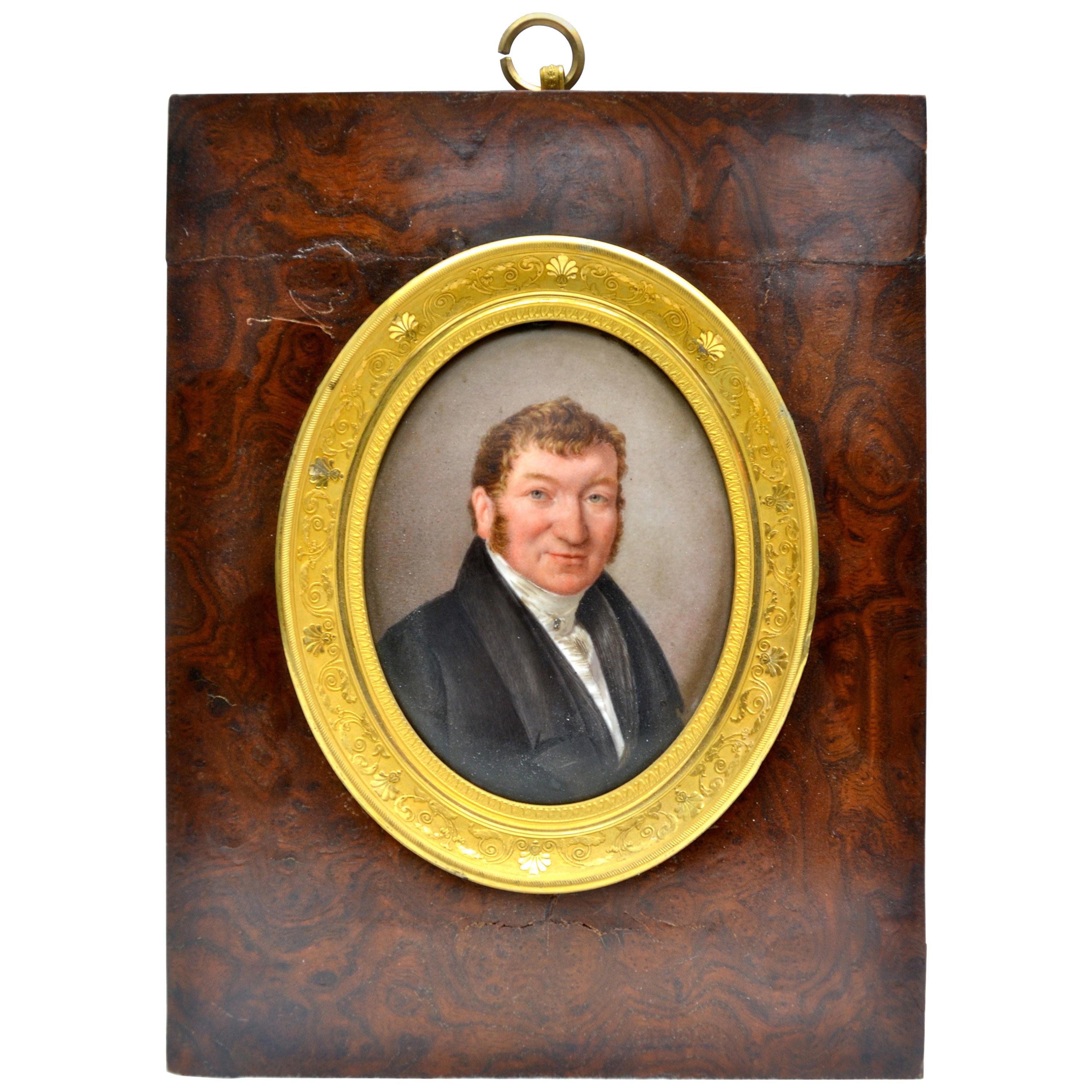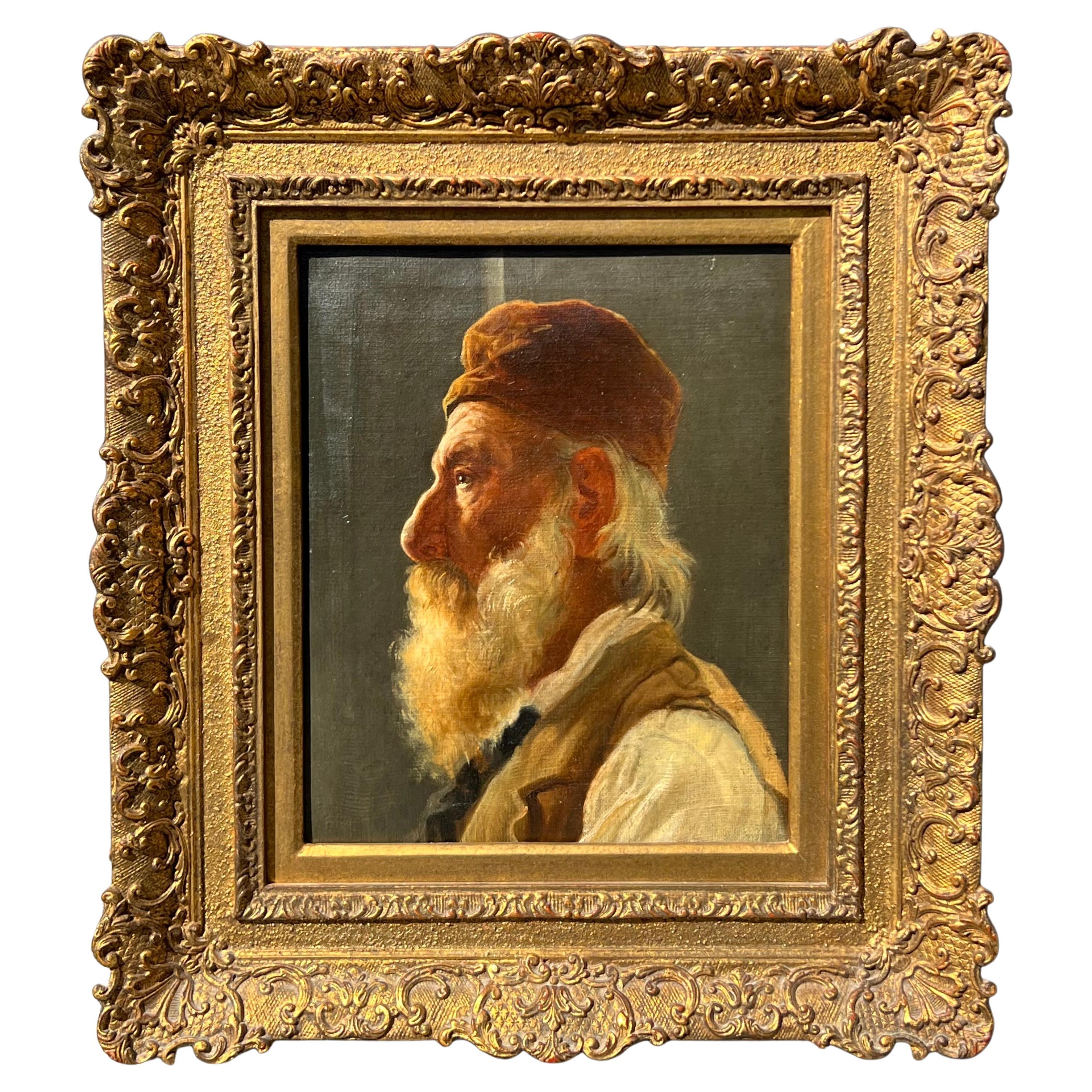Items Similar to Portrait of Gentleman from Della Ruota Family, Lombardy, Dated 1624
Want more images or videos?
Request additional images or videos from the seller
1 of 6
Portrait of Gentleman from Della Ruota Family, Lombardy, Dated 1624
About the Item
Portrait of a Gentleman from Della Ruota family
Lombardy, dated 1624
Oil on canvas
Measures: 105 x 81 cm (without the frame)
The coat of arms at the top left of the portrait identifies the effigy as an aristocrat belonging to the Lombard family Della Ruota, represented at the age of 61 in 1624.
The presence of vanity at the bottom right is a clear reference to the passage of time, to the aging and dying body.
The book on which he places his hand and the carpet allude to his social status as a literate man belonging to a wealthy family.
Very good conditions.
- Dimensions:Height: 41.34 in (105 cm)Width: 31.89 in (81 cm)Depth: 1.97 in (5 cm)
- Style:Renaissance (Of the Period)
- Materials and Techniques:
- Place of Origin:
- Period:
- Date of Manufacture:1624
- Condition:
- Seller Location:Bruxelles, BE
- Reference Number:1stDibs: LU6666231440852
About the Seller
5.0
Vetted Seller
These experienced sellers undergo a comprehensive evaluation by our team of in-house experts.
1stDibs seller since 2022
6 sales on 1stDibs
Typical response time: 7 hours
- ShippingRetrieving quote...Ships From: Bruxelles, Belgium
- Return PolicyA return for this item may be initiated within 3 days of delivery.
More From This SellerView All
- Leandro Bassano, Portrait of a SavantBy BassanoLocated in Bruxelles, BELeandro Bassano (Bassano del Grappa 1557 - Venise 1662) Portrait of a savant Venise, XVI century Oil on canvas; modern frame. Measures: 117 x 88 ...Category
Antique 17th Century Italian Renaissance Paintings
MaterialsCanvas
- Pair of Wooden Chairs, Lombardy, 17th CenturyLocated in Bruxelles, BEPair of beautifully carved wooden chairs Lombardy, first half of 17th century H 86 x L 48 x P 43 cm Pair of “da balia” (nanny) chairs. The backrest is decorated with winged myt...Category
Antique 17th Century Italian Renaissance Chairs
MaterialsWood
- Cercle of Jacopo della Pila - Marble relief depicting a winged CherubLocated in Bruxelles, BECercle of Jacopo della Pila (Lombard, in Naples 1471-1502) Marble relief depicting a winged Cherub Naples, second half of15th century 40 x 57 x 12 cm Exquisitely carved, this relief portrays a winged cherub with cascading hair and delicate features. The cherub's plump, smooth countenance, rounded cheeks, outlined lips, and finely drawn nose emanate a sense of tenderness. The quadrangular module, is adorned with a carved frame. The relief ascends gradually, transitioning from the low relief of the wings to the high relief of the head. The rectangular frame and the subtly curved form of the artwork suggest that the relief likely adorned the upper part of an arch or a vaulted chapel. The type is that of the perspective room with a coffered ceiling decorated with figures of winged cherubs, which is found in various Neapolitan chapels of the 15th century. Coffered ceilings attest to the recovery of antiquity and the search for luxury in Renaissance architecture, first in Florence, then in Rome and Naples. The majority of the numerous family chapels and tombs built during the late fifteenth century in south of Italy employ the new formal vocabulary of the Florentine Renaissance in a self-confident manner that permitted a broad spectrum of variations. The escalating admiration for the classical world, coupled with the development of perspective, significantly contributed to the Renaissance endorsement of coffered ceilings. This artistic and constructive device drew inspiration from the intricate marble patterns observed in historical landmarks such as the Arch of Titus, the Temple of Vesta in Tivoli, the Pantheon, and the Basilica of Maxentius. A distilled product of both mathematical and artistic cultures, deeply scrutinizing the ancient world, the coffered ceiling plays a vital role in the perspective construction of space with its regular and directional geometry. The motif of the coffered ceiling decorated with cherubs in relief was introduced in Naples by Francesco Laurana in the plastic decoration of the Arch of Castelnuovo. Laurana's impact on the art scene in the south of Italy was profound. The introduction of the winged cherub into the region's artistic vocabulary bridged the gap between the classical and the contemporary, creating a synthesis that resonated with both aesthetic and spiritual sensibilities. His influence extended beyond the immediate visual appeal, shaping the cultural identity of the Renaissance in southern Italy. Although the plastic decoration of the Arch of Castelnuovo cannot certainly be ascribed to a mature Renaissance style, it was precisely on this occasion that the sculptors who worked there could get to know and export throughout the Italian peninsula that type of "Florentine classicism" which, even in the 15th century Naples, was conditioned by the Burgundian culture imported into the Kingdom by Alfonso of Aragon himself, with artists called from Spain and Northern Europe. The coffered ceiling, with its geometric patterns and Laurana's winged cherubs nestled within, became a symbol of refinement and cultural sophistication. The relief sculptures, carefully integrated into the overall design, transformed the ceiling into a celestial realm, inviting viewers to contemplate the divine while immersed in the grandeur of the Renaissance space. Similar winged cherubs appears also in the Naples cathedral. Within the renowned Succorpo Chapel, a mesmerizing marble coffered ceiling adorned with cherubs epitomizes the splendor of the Neapolitan Renaissance. The interplay of light and shadow on the textured surface of the marble coffered ceiling introduces an ethereal dimension, providing an immersive visual experience for observers. The geometric precision and the repeated patterns, reminiscent of classical motifs, establish a sense of harmony and balance that has become the hallmark of the Neapolitan interpretation of Florentine Renaissance aesthetics. Although probably intended to be admired from a distance, this cherub is intricately detailed and exquisitely rendered: the face and hair are elegantly outlined and the feathers are textured through juxtaposed lines. The marble, both figurative and decorative, adheres to the principles of balance and restrained ornamentation typical of the « Florentine Classicism ». Harmonious shapes and gracefully orchestrated curves , rooted in the classical repertoire, converge to evoke a sense of ethereal beauty. The surface displays the masterful use of a chisel to intricately carve the feathers and facial features, creating an almost abstract quality. This work is a testament to a sculptor of great skill and rich figurative knowledge, seamlessly blending classical firmness in contours with a refined treatment of the marble's surface. The combination of tradition and innovation point to a stylistic idiom from Lombardy, in particular we can find some comparaisons with the works of Jacopo della Pila, sculptor of Lombard origin working in Naples in the second half of the 15th century. He is documented there between 1471 and 1502, and is a protagonist of the Aragon Renaissance in the second half of the Quattrocento, together with the other great Northern sculptor active in the kingdom, Domenico Gagini. the first commission he received dates back to August 9, 1471, when Jacopo publicly committed to sculpting the funerary monument of Archbishop Nicola Piscicelli to be placed in the Cathedral of Salerno. The last known work is an altar ordered on July 29, 1502, by the noble Jacopo Rocco for the church of San Lorenzo Maggiore in Naples. Between these two chronological extremes (1471-1502), we must place the fervent activity of the artist, who had trained in Rome, perhaps under the guidance of Paolo Romano but also engaged in dialogue with other major artists of the city, especially Isaia da Pisa. He enriched his experience in Naples, initially drawing inspiration from the works of Domenico Gagini and later from the Tuscan masterpieces of Antonio Rossellino and Benedetto da Maiano destined for the church of Santa Maria di Monteoliveto. Jacopo della Pila's artistic personality is thus based on a complex interplay of influences, contributing to the definition of a highly personal style. Close comparaison can be made between our cherub and the winged angels reliefs...Category
Antique 15th Century and Earlier Italian Renaissance Figurative Sculptures
MaterialsMarble
- Large Terracotta Relief - Lombardy, First Half of 17th CenturyLocated in Bruxelles, BELarge Terracotta relief of the flight into Egypt Lombardy, first half of 17th century Painted terracotta 91 x 85 x 11,5 cm This event in the early life of Christ is recounted i...Category
Antique 17th Century Italian Baroque Figurative Sculptures
MaterialsTerracotta
- Fra Mattia Della Robbia, Saint Joseph, Tuscany, Around 1505-1510By Della RobbiaLocated in Bruxelles, BEFra Mattia Della Robbia (Firenze 1468-1534) Saint Joseph Terracotta Tuscany, around 1505-1510 55 x 40 x 30 cm Marco della Robbia the Younger (April 6, 1468 in Florence - 15...Category
Antique 16th Century Italian Renaissance Figurative Sculptures
MaterialsTerracotta
- Pol Mariën (1932) - Les attributs du graveurLocated in Bruxelles, BEPol Mariën (1932) Les attributs du graveur huile sur toile marouflée sur panneau signé 30 x 40 cmCategory
20th Century Belgian Modern Paintings
MaterialsCanvas
You May Also Like
- Miniature Portrait of a French Gentleman Dated 1825Located in Vancouver, British ColumbiaA finely painted oval miniature portrait on porcelain of a wealthy/aristocratic gentleman from the second empire period in France. The portrait is in an...Category
Antique Early 19th Century French Empire Paintings
MaterialsPorcelain
- Portrait of a GentlemanLocated in Woodbury, CTAn unsigned, early 19th century oil on canvas portrait of a gentleman in a short jacket--possibly a sea captain; traditional gold frame.Category
Antique 19th Century British Paintings
MaterialsCanvas
- Portrait of a GentlemanLocated in WEST PALM BEACH, FLThis is a fine oil painting of a gentleman. 19th century.Category
Antique 19th Century English Other Paintings
MaterialsCanvas, Paint
- Portrait of a Distinguished GentlemanLocated in Wiscasset, MEVery well executed oil on canvas featuring a distinguished gentleman presented in a gilt frame measuring 18" x 15.5". The painting was done by a talented hand and dates to the 19th...Category
Antique 19th Century European Victorian Paintings
MaterialsPaint
- Regency Portrait of a GentlemanLocated in Buchanan, MIVery nice Regency portrait of a handsome gentleman, unframed. Please note we have a large selection of portraiture including gentleme...Category
Antique 19th Century British Regency Paintings
MaterialsCanvas
- 20th Century Antique French Original Oil Portrait of Gentleman Dated 1922Located in COLMAR, FRA decorative, moody, quality portrait. Very sought-after. All the rage in interiors right now. This antique oil painting on stretched canvas has been sourced in France. It is signed ...Category
Vintage 1920s French Victorian Paintings
MaterialsCanvas
Recently Viewed
View AllMore Ways To Browse
Antique Painted Vanity
Antique Vanity Painted
Painted Antique Vanities
Painted Antique Vanity
Framed Coat Of Arms
Italian Lombard
Renaissance 17th Century Painting
Antique Effigy
Antique Hand Painted Vanity
Portrait Gentleman Italian
Portrait Of A Gentleman Italian
Carpet Coat
Painting Antique Vanity
Vanity 17th Century
Italian Renaissance Coat Of Arms
Gentleman Vanity
South American Manatee
Antique Metal Kitchen Cabinet





